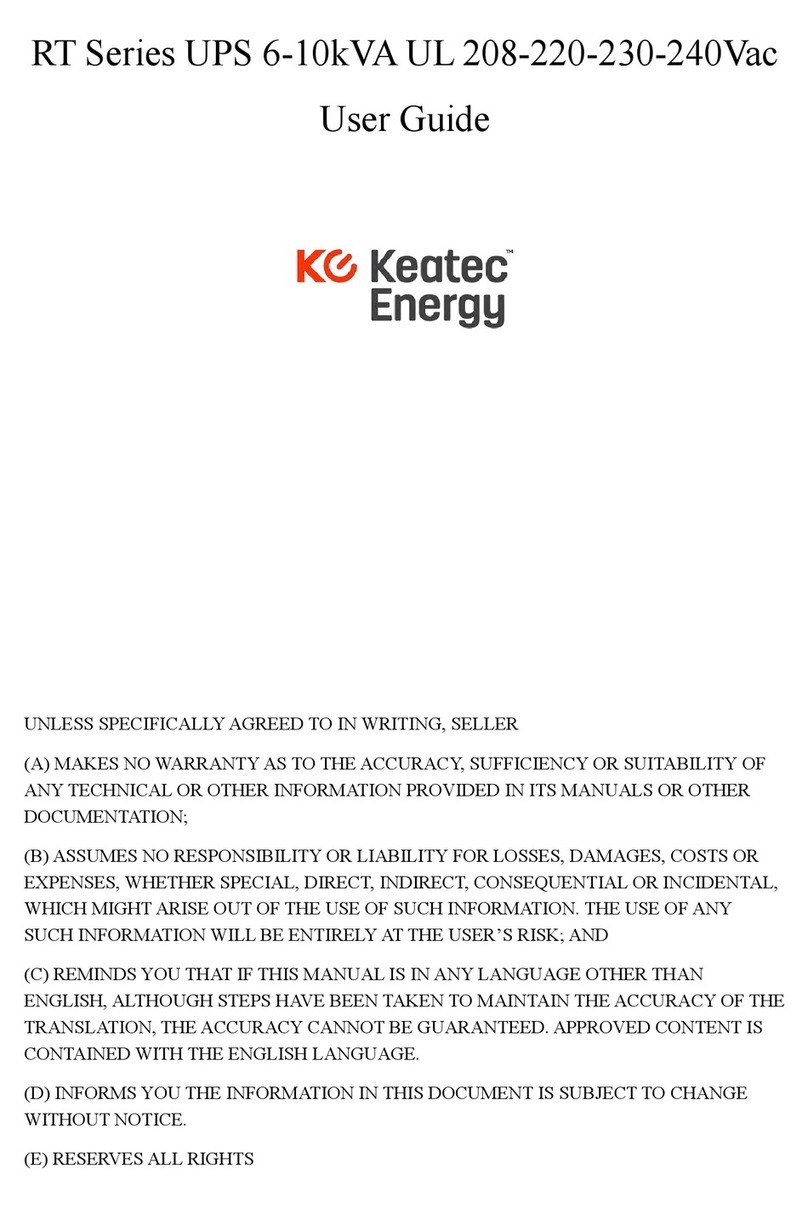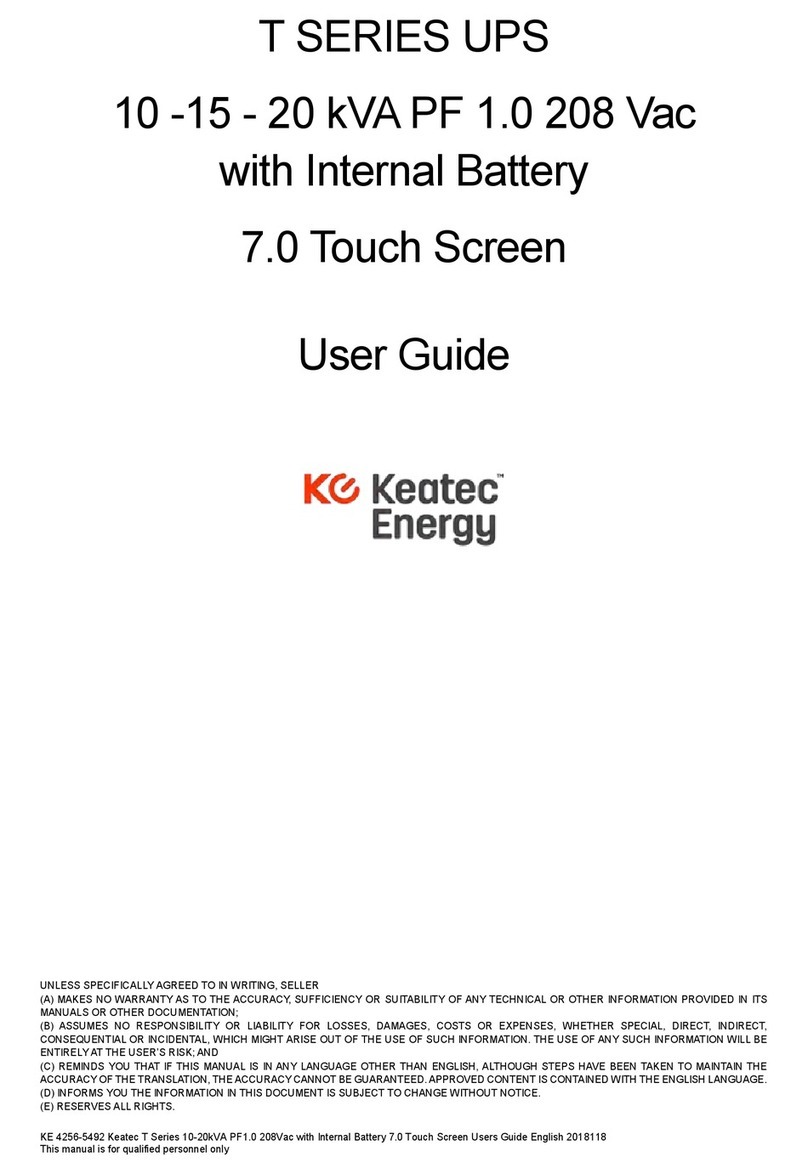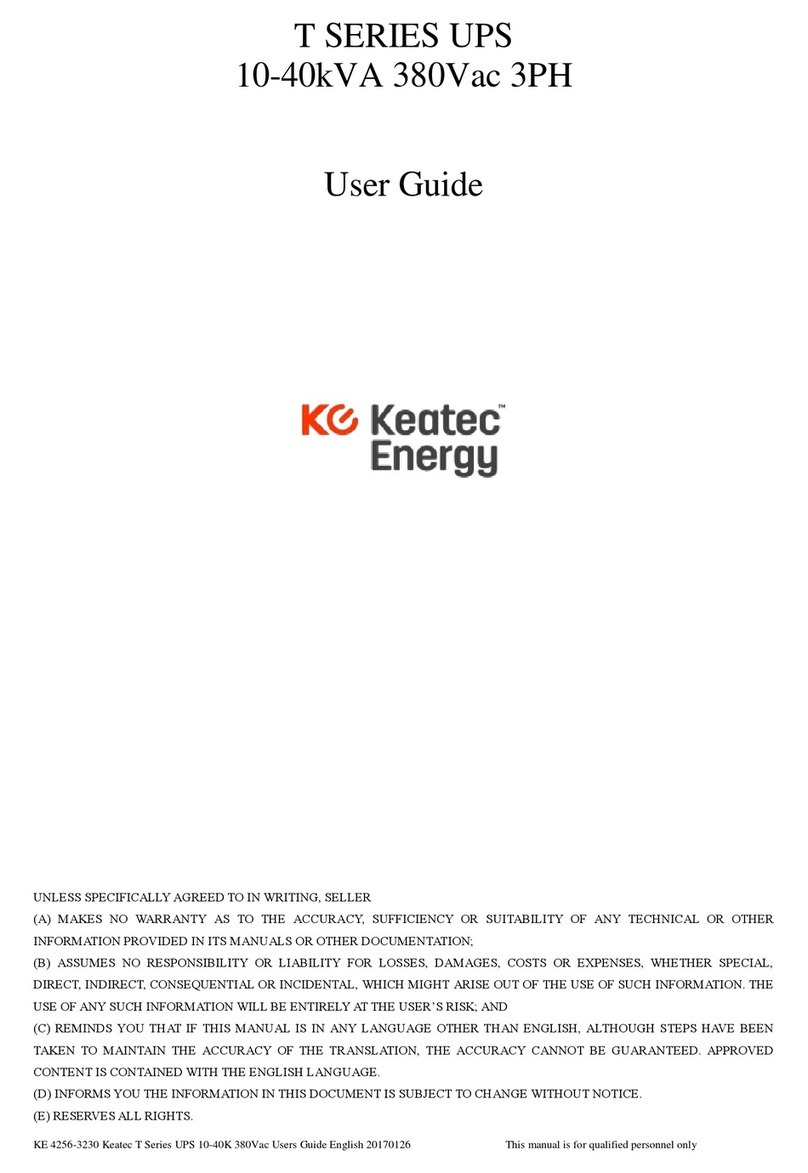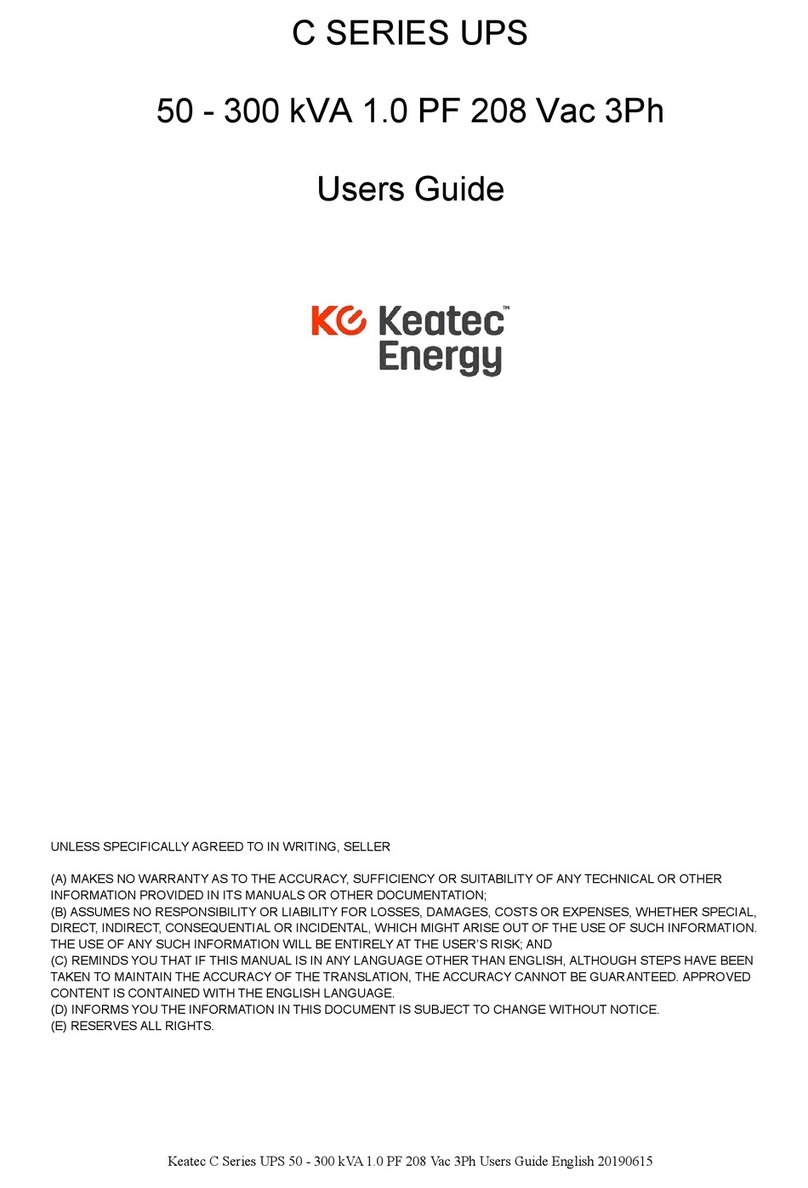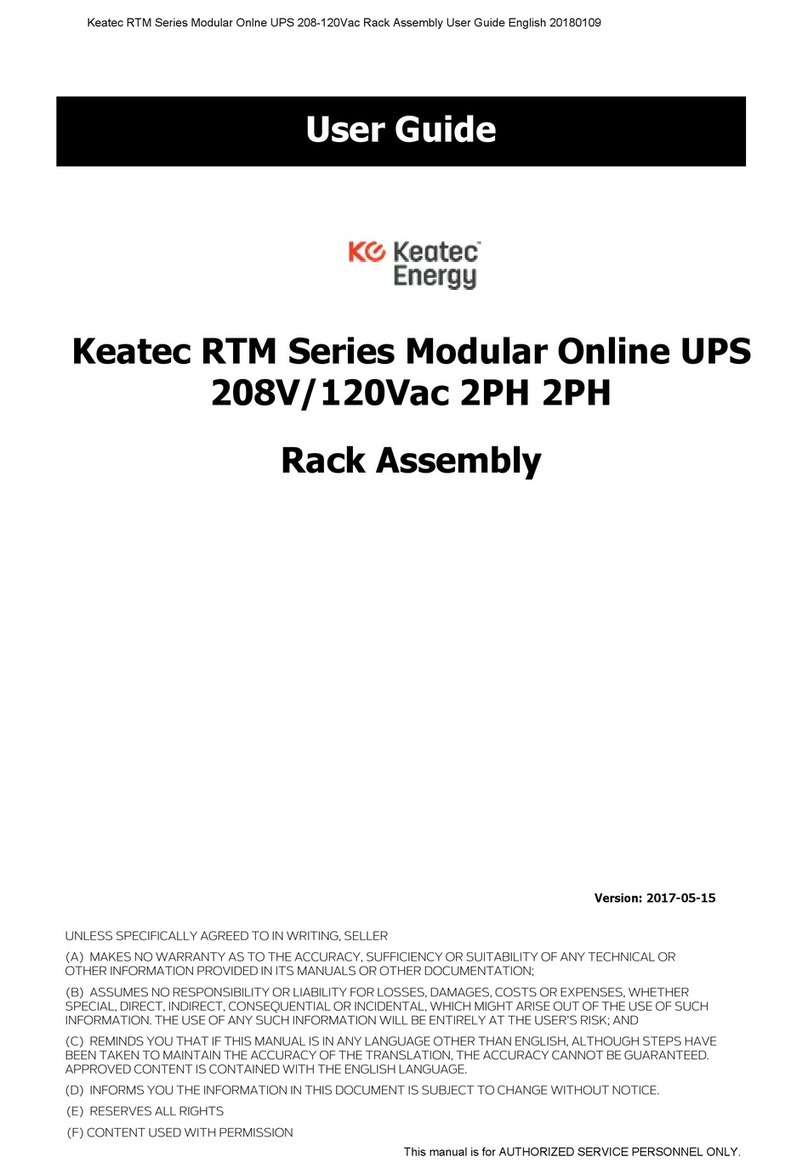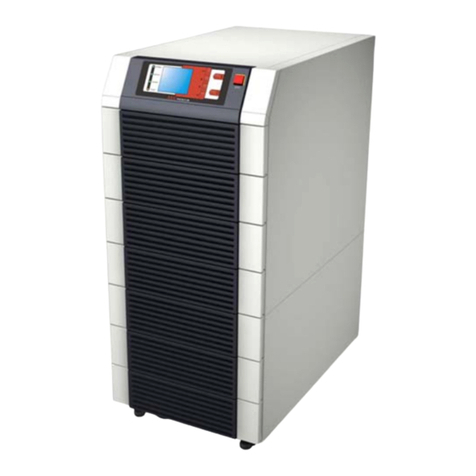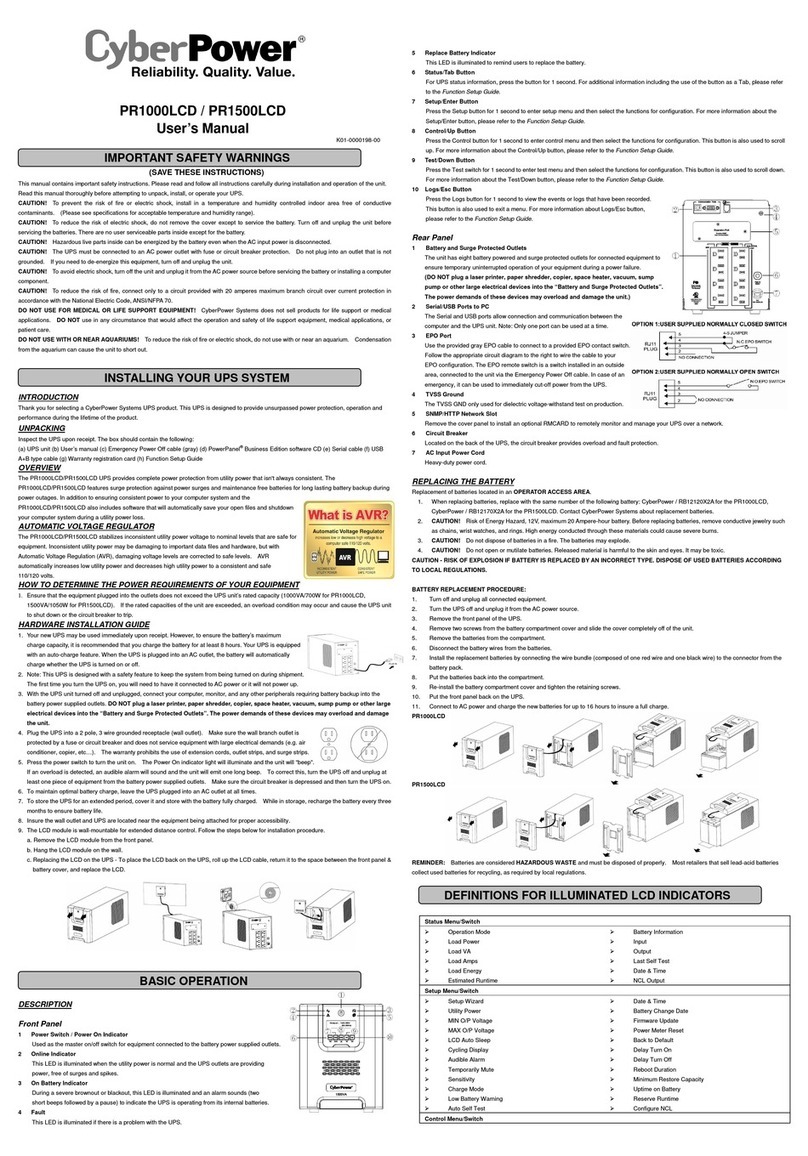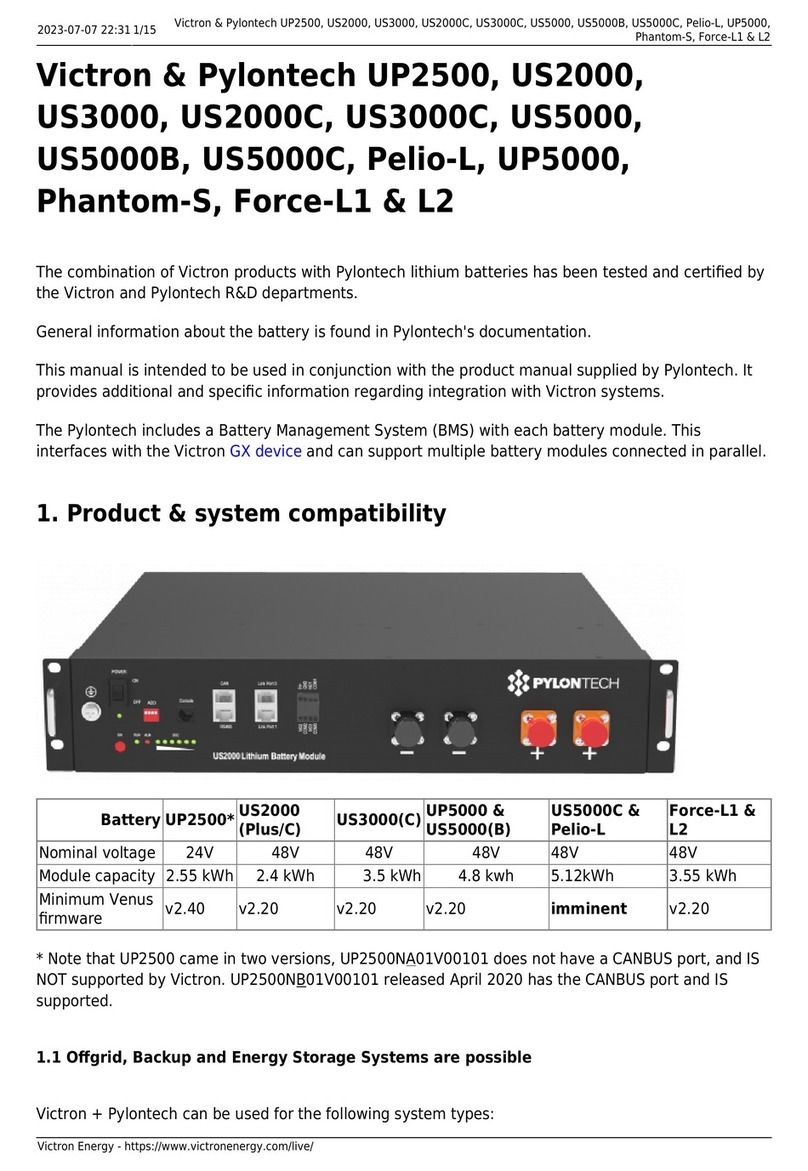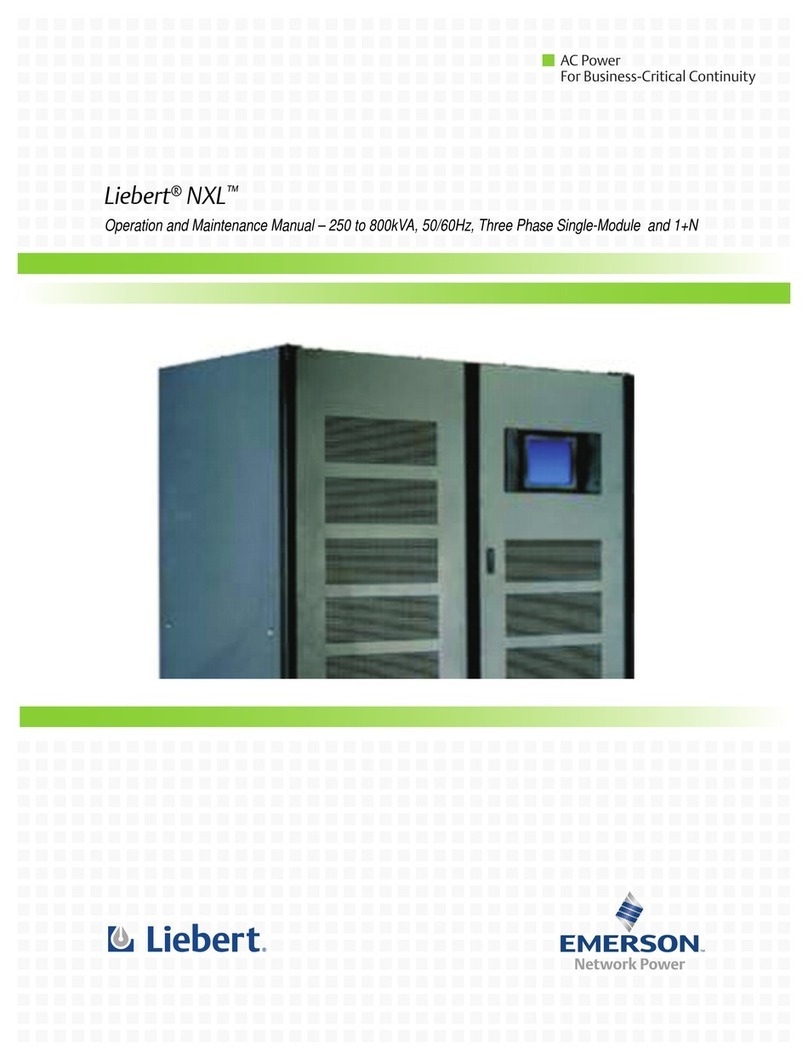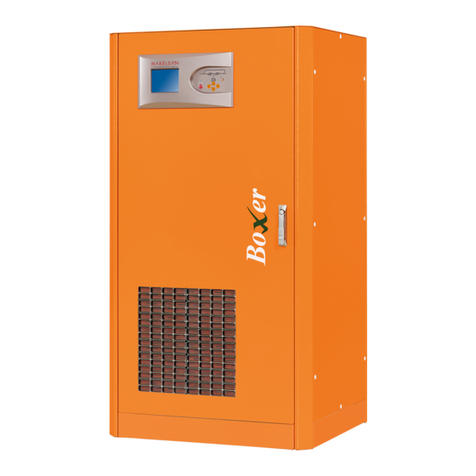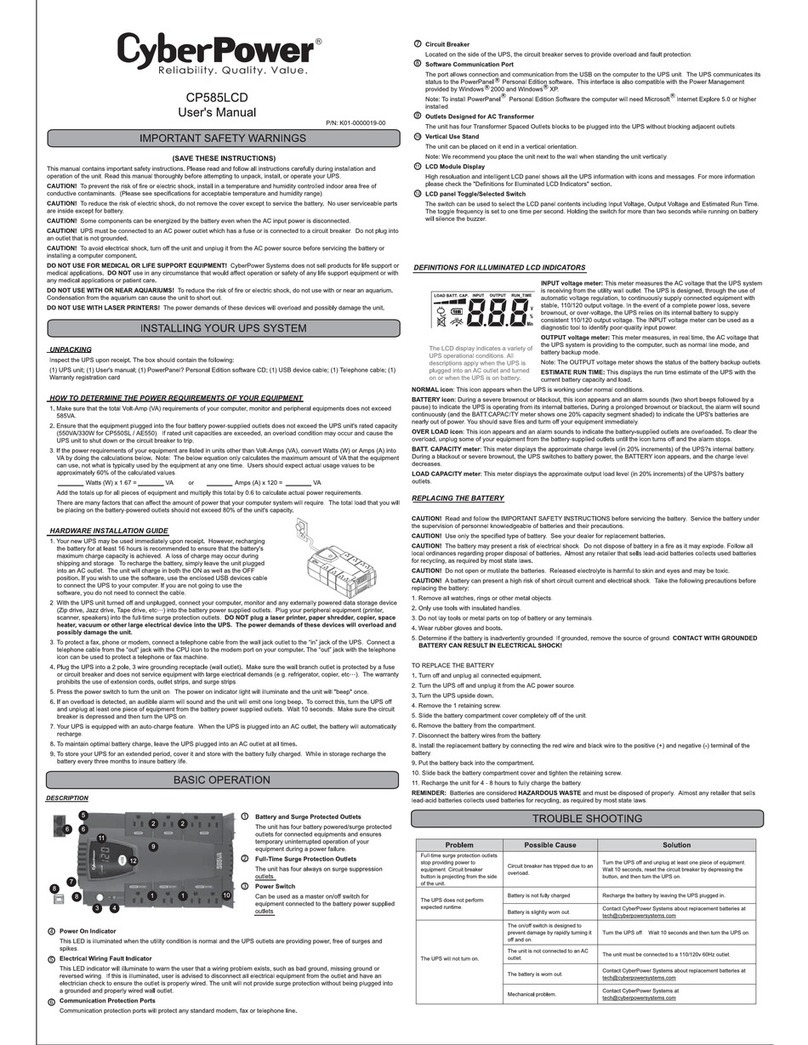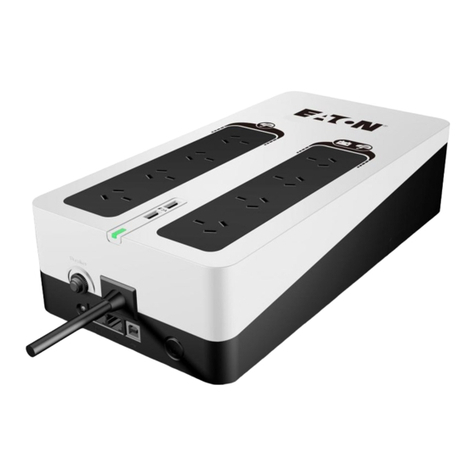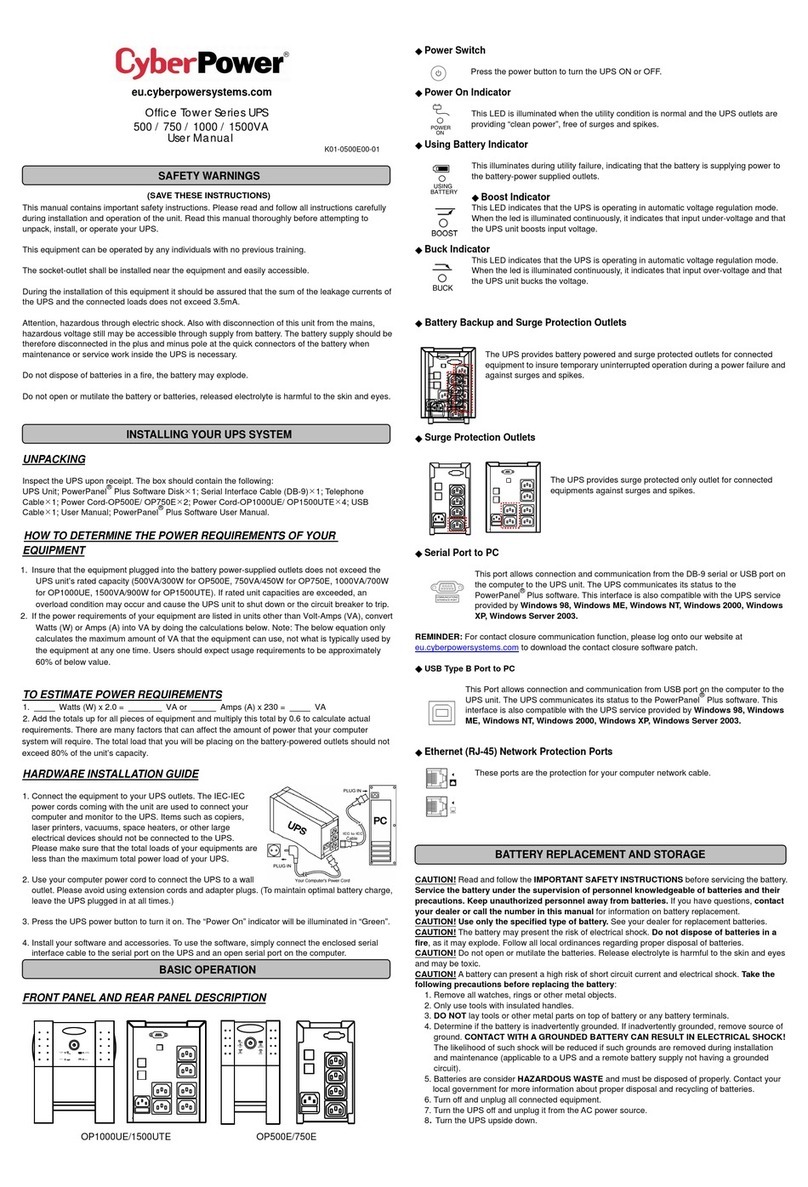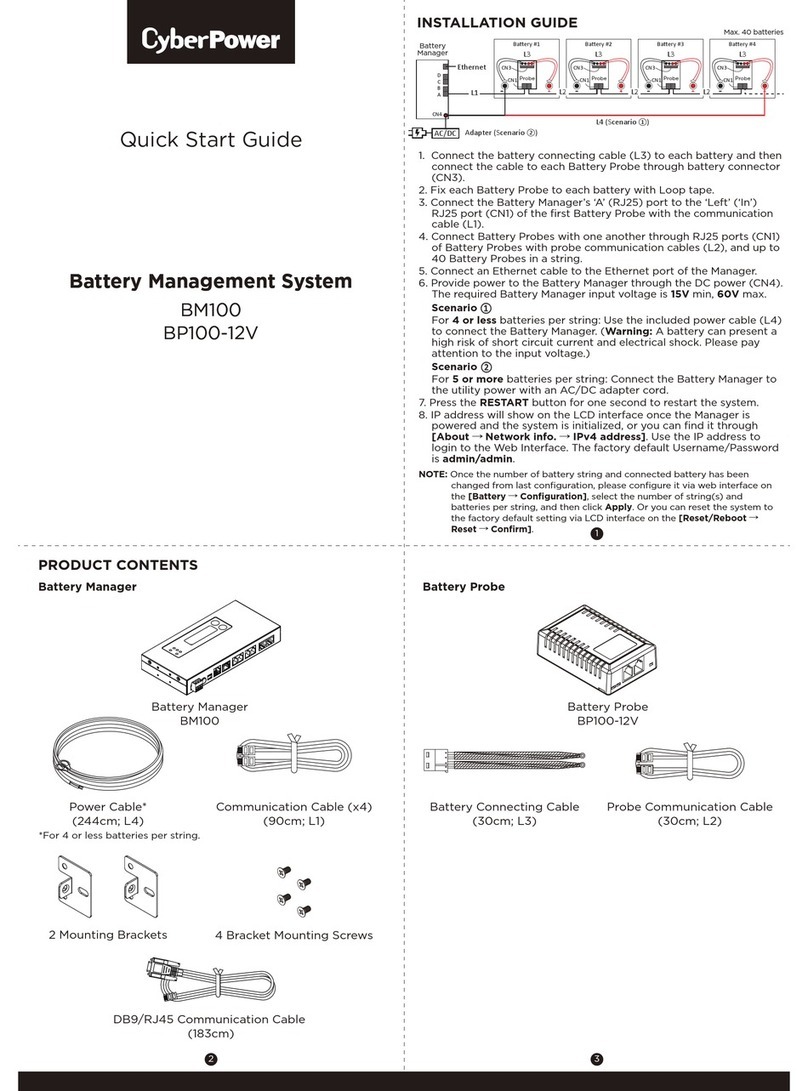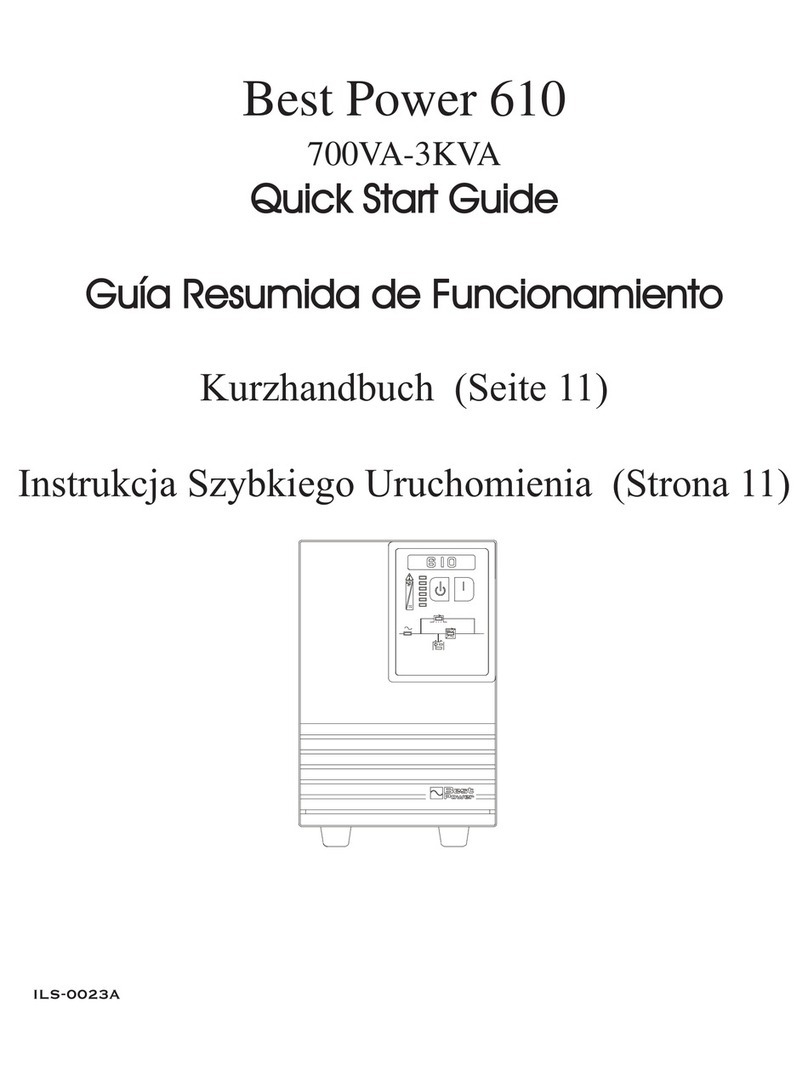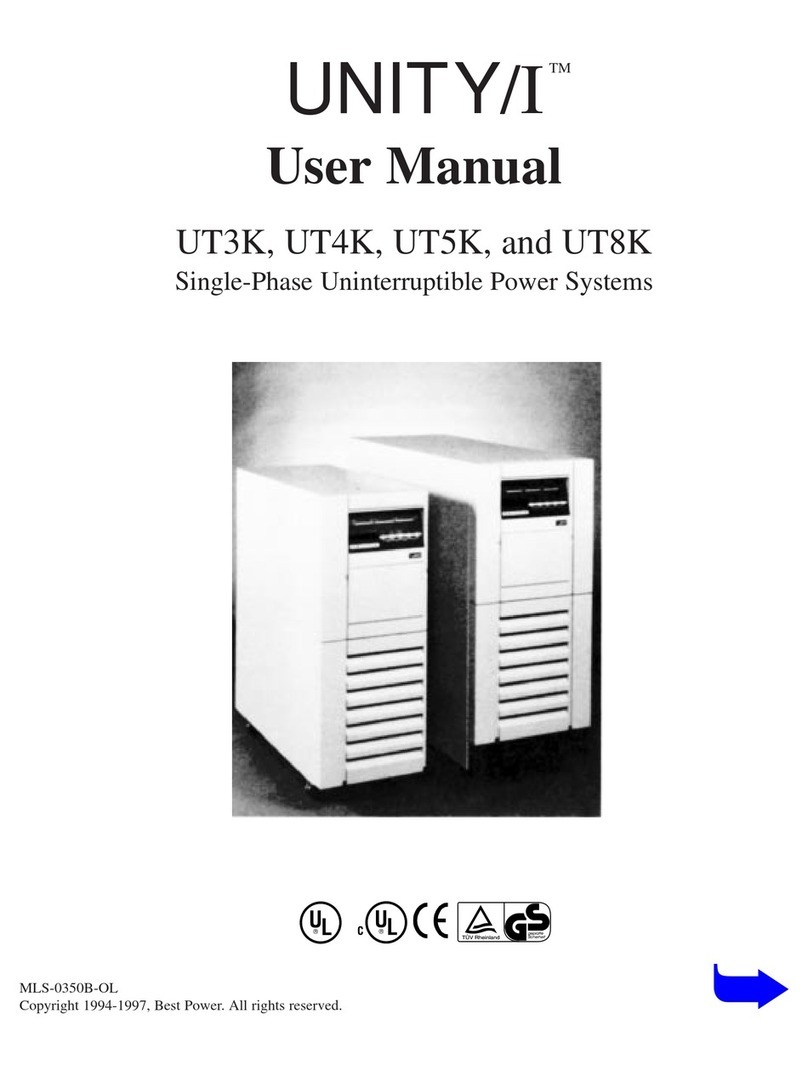KE 4256-xxxx Keatec T Series 25-100kVA PF1.0 208Vac with 7.0 Touch Screen Users Guide English 20190209
This manual is for qualified personnel only Page 3
1 Safety
Important safety instructions
SAVE THESE INSTRUCTIONS - The instructions in this manual are deemed important and should
be closely followed at all times during installation and follow-up maintenance of the UPS and batteries.
Safety instructions in this manual act as a supplement to local safety codes and laws. Our company
does not assume any liability or responsibility caused by disobeying local safety codes and laws.
Servicing of batteries should be performed or supervised by personnel with knowledge of batteries
and the required precautions. Keep unauthorized personnel away from batteries.
Before conducting any maintenance, repair, or shipment, first ensure that the UPS is turned off and
disconnected from all sources of internal and external energy
WARNING! This UPS contains lethal voltages and high temperature inside. All repairs and service
should be performed by AUTHORIZED AND QUALIFIED PERSONNEL ONLY. Keep unauthorized
personnel away from UPS.
WARNING! To reduce the risk of personal injury and equipment damage, abide by all local safety
codes and laws during operation, installation and maintenance.
WARNING! To reduce the risk of electric shock, disconnect the UPS from the main supply before
installing a computer inter-face signal cable. Reconnect the power cord only after signaling
interconnections have been made.
WARNING! (UPS having Internal Batteries): Risk of electrical shock – Hazardous live parts inside this
unit are energized from the battery supply even when the input AC power is disconnected.
WARNING! (No User serviceable Parts): Risk of electrical shock, do not remove cover. No user
serviceable parts inside. Refer servicing to qualified service personnel.
WARNING! (Non-isolated Battery supply): Risk of electric shock, battery circuit is not isolated from
AC input, hazardous voltage may exist between battery terminals and ground. Test before touching.
WARNING! (Fuses): To reduce the risk of fire, replace only with the same type and size of fuse.
WARNING! UPS units are extremely heavy. Caution should be taken in moving and positioning
equipment.
WARNING! To reduce the risk of fire or electric shock, install the UPS in a temperature and humidity
controlled, indoor environment, free of conductive contaminants (flammable gas, excessive dust, etc.).
Ambient temperature must not exceed 40°C (104°F). Do not operate near water or in excessive
humidity (95% maximum).
WARNING! To reduce the risk of overheating and fire, operate the UPS in a well-ventilated area.
WARNING! To reduce the risk of fire or electric shock, output overcurrent protection and disconnect
switch must be installed in accordance with local Electrical Codes.
WARNING! To reduce the risk of fire or electric shock, an external DC Circuit over current protective
device must be installed in accordance with the National Electric Code, ANSI/NFPA 70.
• 10kVA UPS connect only to a circuit provided with DC 63 amperes maximum branch circuit
over current protection in accordance with the National Electric Code, ANSI/NFPA 70.
• 15/20kVA UPS connect only to a circuit provided with DC 125 amperes maximum branch
circuit over current protection in accordance with the National Electric Code, ANSI/NFPA 70.
WARNING! A battery can present a risk of electric shock and high short circuit current. The following
